
When District Collector Rajarshi Shah visited schools in Adilabad, what he saw shocked him.
Children as young as 11 were chewing tobacco, unaware of the damage it caused. Many girls missed school every month during menstruation due to a lack of awareness and facilities. Even basic concepts like ‘stress’ or ‘hygiene’ confused students.
To address this silent crisis, Shah decided to reimagine the most overlooked part of school life — the morning assembly.
What was once a routine prayer session is now ‘Aarogya Pathshala’ — a 20-minute daily exercise where students learn about hygiene, nutrition, mental health, and social responsibility through discussions, skits, and activities.
Each day comes with a theme:
- Monday – personal hygiene
- Tuesday – health & nutrition
- Wednesday – stress management and mental health
- Thursday – anti-drugs
- Friday – disease prevention
- Saturday – confidence and leadership
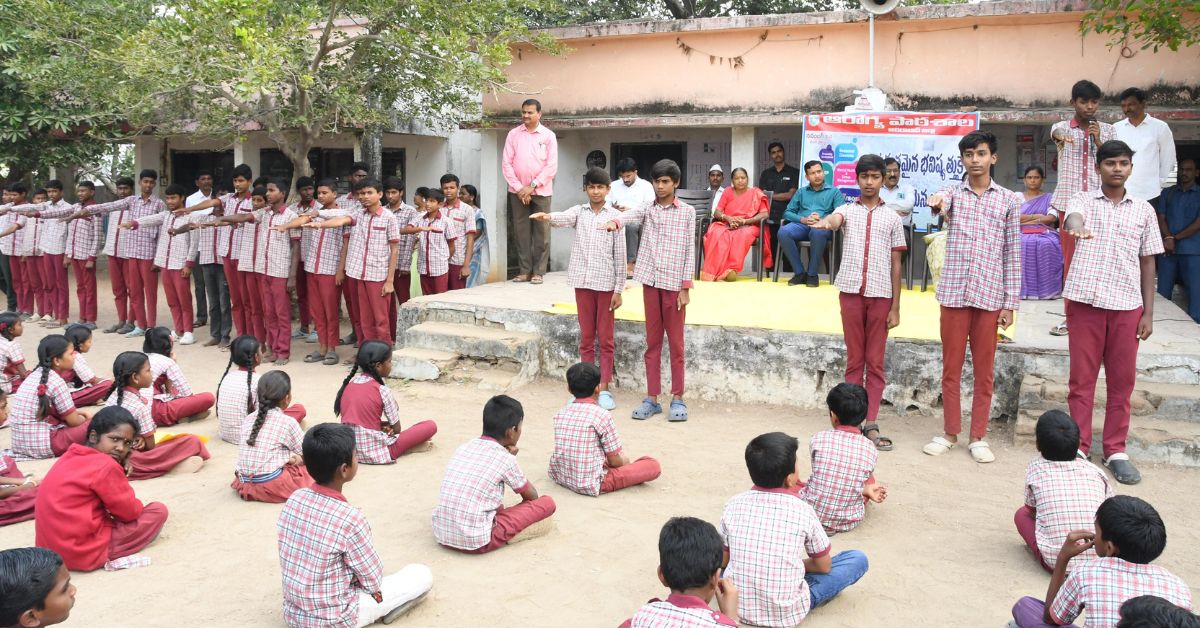
The results were immediate. Attendance shot up from 50 percent to nearly 70 percent. Students who once stayed home began looking forward to school.
Advertisement
Launched on Children’s Day 2024, the initiative has already changed the way over 250 schools in the district approach health and education.
Why Adilabad needed Aarogya Pathshala
Adilabad is among the most socio-economically backward districts in India. Nearly 45 percent of its population belongs to the Scheduled Castes and Tribes. Poverty, malnutrition, and lack of access to health facilities mark daily life.
“Health awareness among children — and even parents — was alarmingly low. Basic habits like handwashing or bathing were neglected. Many faced exam stress, and worryingly, some had begun using local substances like jarda (chewing tobacco),” Shah recalls.
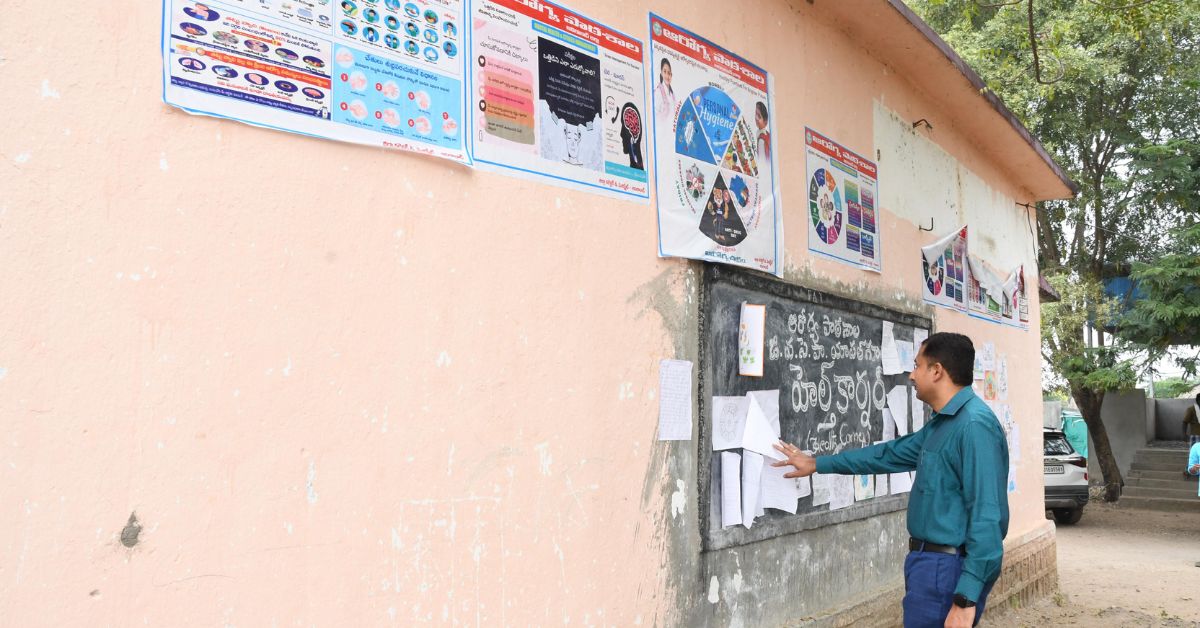
These insights came during his Poshan Charcha visits to schools and anganwadi centres. “Although principles of health and hygiene existed in the curriculum, it was clear that more needed to be done. We had to adopt a campaign-style approach, something dynamic and impactful.”
That’s how Aarogya Pathshala was born.
Beyond academics: six pillars of health
The programme focuses on six critical areas — hygiene, nutrition, stress management, anti-drug education, disease prevention, and personality development.
Advertisement
But it isn’t limited to the education department. Shah brought together multiple wings of the administration — health, women and child welfare, AYUSH, and rural development — to anchor the initiative.
“Responsibilities were clearly divided. Each department played a vital role in this collective journey towards a healthier generation,” he explains.
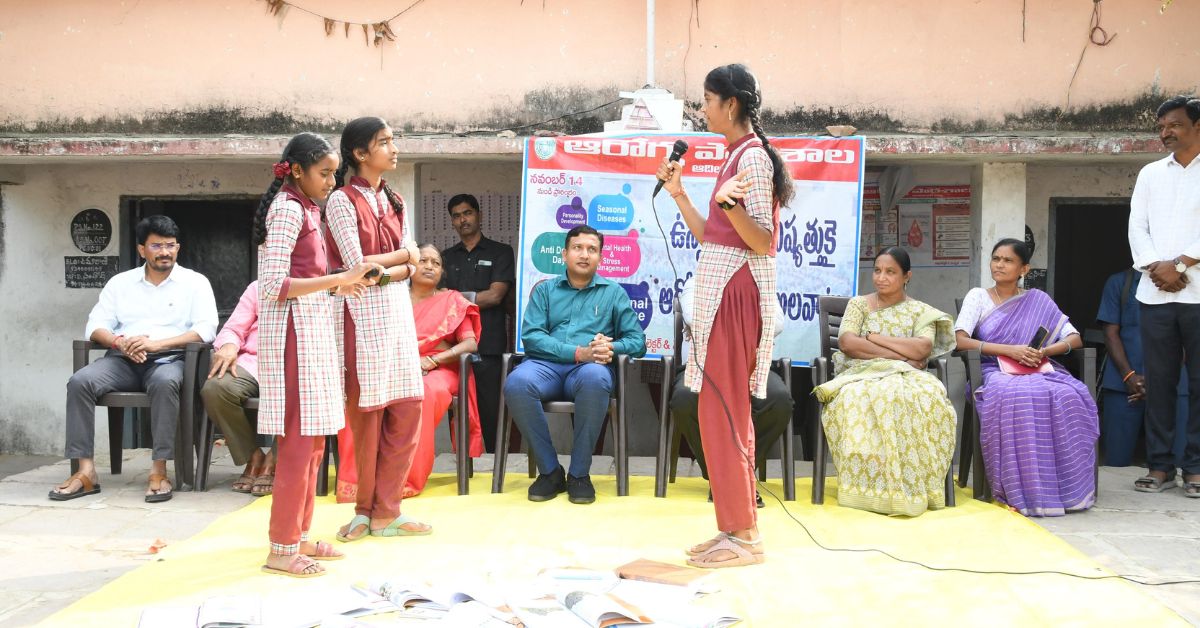
Initially launched in 146 high schools and junior colleges, Aarogya Pathshala has now expanded to 251 schools, covering even upper primary classes.
With its wide reach, the programme is instilling not just health awareness, but confidence and leadership among children.
‘I convinced a relative to give up alcohol’
The most powerful proof of Aarogya Pathshala’s impact comes from the children themselves.
Take Akshara, a Class 10 student at ZPSS Saraswati Nagar. “Earlier, I didn’t understand the importance of nutrition or hygiene. Now I eat healthy food, value vitamins, and help maintain cleanliness at home and school,” she says.
Advertisement
She credits the sessions with helping her overcome stage fright. “My teachers advised me to practice speaking in front of a mirror. Now, I regularly deliver speeches and take part in school competitions.”
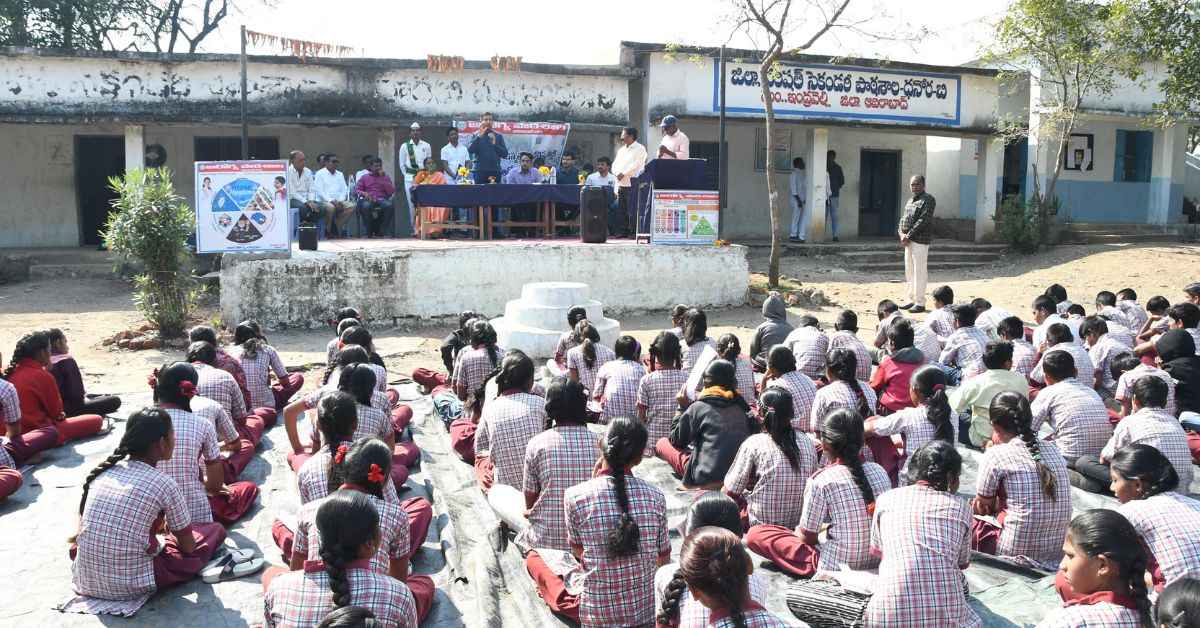
Stress management lessons helped her balance academics with her love for cricket, even while playing at the district level. One of her proudest moments was convincing a relative to give up alcohol. “I felt a sense of responsibility to speak up, and to my surprise, he listened,” she says.
For girls like her, menstruation is no longer a reason to skip school. “I don’t feel embarrassed anymore. Many girls now attend school regularly, and we even practice yoga and meditation together.”
Fighting absenteeism among girls
In rural Adilabad, long distances and poor facilities have always affected school attendance. For girls, menstruation was an added barrier.
Lunde Ramu, Principal of Telangana Model School & Jr College in Jainad mandal, explains: “Students here walk 2–3 km from the main road just to catch a bus. Many come from families that can’t afford two-wheelers. During the rainy and summer seasons, girl students faced the greatest challenges. As a result, absenteeism was as high as 44–45 percent last year.”
With support from the District Collector and NGOs, schools set up sanitary pad vending machines, incinerators, and dedicated rooms with privacy, hot water bags, pain relief balms, and first-aid.
Advertisement
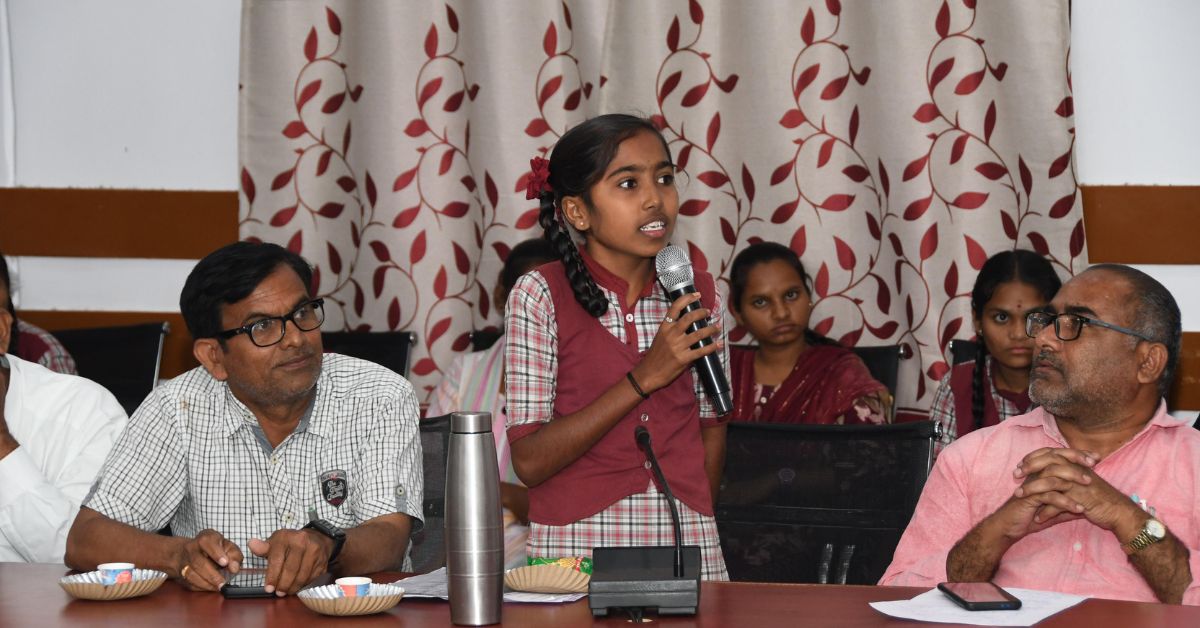
“Earlier, girls skipped school during menstruation. Now, they feel confident to attend regularly,” says Ramu.
The results were dramatic. “In the Intermediate section, earlier 102 out of 160 seats were filled by boys. This year, almost the reverse happened — 98 seats are now occupied by girls. Their confidence has grown, they participate in cultural programmes, and they openly speak about hygiene.”
Overcoming challenges
Implementing the programme across over 250 schools wasn’t easy.
“Getting teachers, yoga instructors, and medical officers to work in sync required structured schedules and constant reviews,” Shah admits. “Teachers initially feared it would become an added burden. But after workshops and IEC material, they themselves demanded its expansion.”
Monitoring was another hurdle. To track attendance and health activities, ASHAs (Accredited Social Health Activists) began uploading photos and data through a simple app during school visits.
The initiative was also linked with nutri-gardens, school repair works, and menstrual hygiene facilities, ensuring health awareness was backed by infrastructure.
Advertisement
“Health habits cannot change in a couple of months. Continuous reinforcement through skits, cultural activities, and student champions is necessary,” Shah says.
Ripple effect in families
Teachers say the change is visible not just in schools but in homes too.
“Students are carrying health messages back to their villages and families. That ripple effect is powerful,” says Ramu. “If Aarogya Pathshala extends into villages, where parents are sensitised as well, the change will be even faster.”
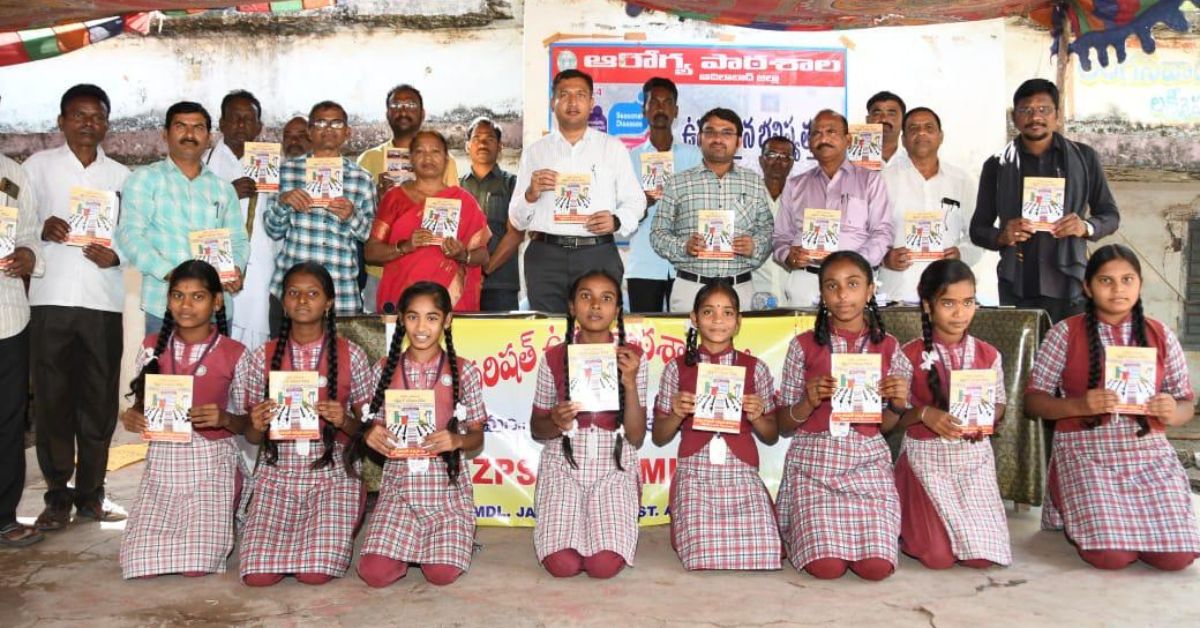
Children now lead awareness activities themselves, through skits, drawings, and debates. “When we deal with teenagers with empathy, they respond. They are no longer passive listeners, they are becoming active role models,” Ramu adds.
Recognition and replication
The success of Aarogya Pathshala has drawn national attention. The programme won the prestigious SKOCH Award, which recognises excellence in governance projects.
Importantly, it is designed to be sustainable. It is anchored by a district-level committee chaired by the Collector, supported by SOPs (Standard Operating Procedures) and a detailed Aarogya Pathshala Toolkit with lesson plans, activity charts, audio-visual material, and monitoring formats.
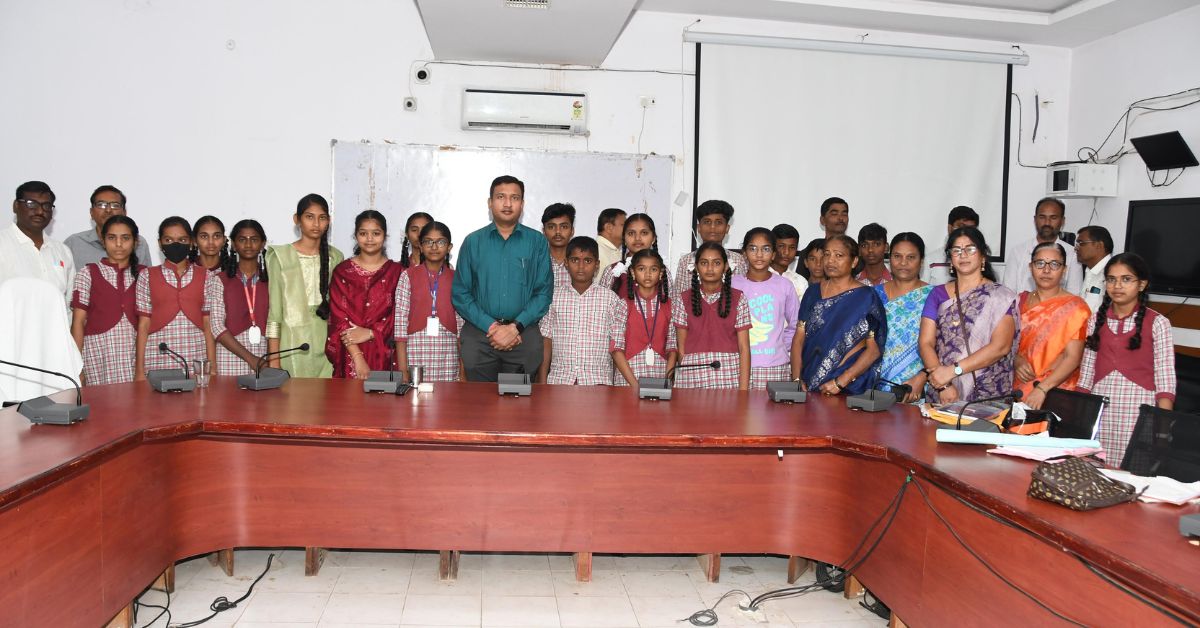
“All materials are freely available at http://www.aarogyapatashala.in,” Shah shares.
The model is simple, low-cost, and easy for other districts to replicate. In fact, the State Government’s Adolescent Safety Empowerment Programme already aligns with its themes of drug abuse prevention, mental health, life skills, and hygiene.
‘A small change, a big impact’
For Shah, Aarogya Pathshala is more than just another government project.
“The accolades are encouraging, but what truly drives us is the visible impact — soaring attendance, reduced stress, and students using lessons to overcome personal challenges,” he says.
“Today, Aarogya Pathshala is proving that a small change in the school routine can have a big impact — equipping children in even the remotest villages with the knowledge, confidence, and habits to lead healthier, safer lives.”
All images courtesy: Rajarshi Shah IAS.








































































































































